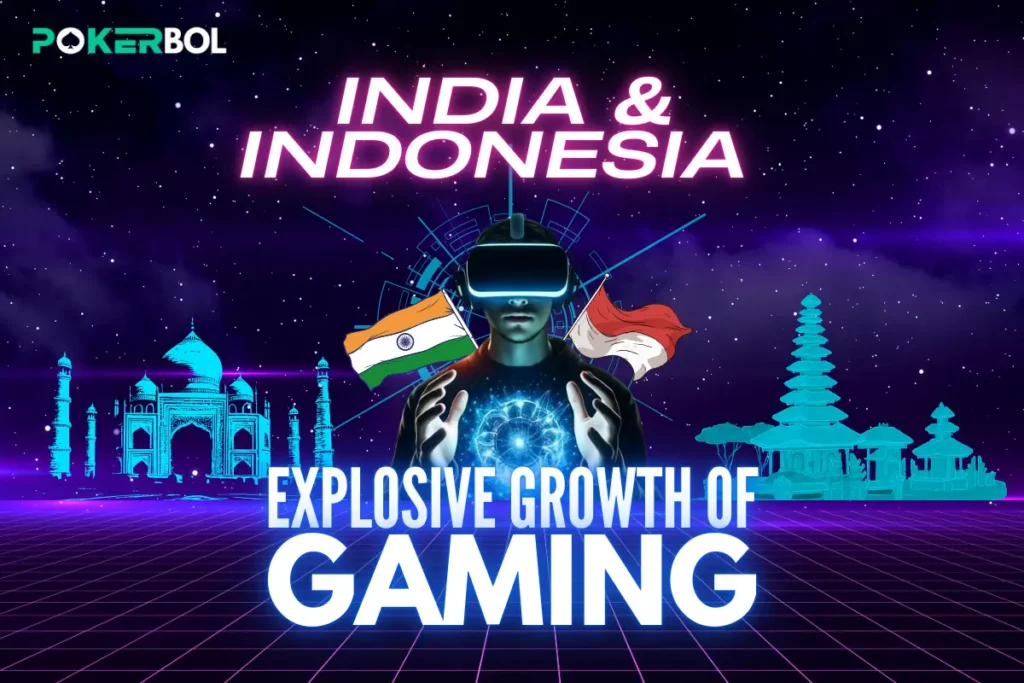Fire for gaming and nothing is hotter than in India and Indonesia. Two of Asia’s heavyweights are rapidly moving forward into becoming behemoths for gaming, where millions of people plunge into virtual worlds and the esports arena. What’s behind this phenomenal growth? What opportunities lie ahead for those willing to take their places in exciting markets?
We embarked to explore what was shaping the Indian and Indonesian booms in gaming: what made them tick, and how success could be secured in these markets that were so rapidly shifting.
The explosive would define the gaming market of India – 591 million active gamers a force to reckon with. That is remarkable only if an unbelievable 94% of them were playing on a mobile device; affordability in handsets and dirt-cheap data plans democratizing gaming and thereby reaching the greatest and most assorted population in human history.
This mobile-first approach has fueled the growth of casual and hyper-casual games, where the market is dominated by Ludo King and Candy Crush Saga. It’s not such a casual form of entertainment alone, though; other than that, the esports domain is flourishing in India. PUBG Mobile, Free Fire, and Valorant have bagged millions of viewers, most of whom aspire to be pros.
Numbers, really, speak for themselves. India’s gaming market was pegged at $3.8 billion during FY24 and will reach a shocking $9.2 billion in FY29. In-app purchases are one of the areas generating immense revenue; in 2022, the estimated market size stood at $405 million. Finally, the estimated size of the esports market could quadruple ₹1,100 crore by the year 2025.
It’s not the number it is so much, but the young, digitally advanced population in India is demanding more innovative and thrilling times. The new trends in VR and other innovation avenues create new games, and video games, especially now that VR arcades and experience centers mushroom in major cities.
Indonesia: A Gaming Giant of Asia
Indonesia ranks as a huge player in Southeast Asia in its gaming market at $1.92 billion during 2021. That’s a market of 43.7 million game players. For sure, not to be seen as negligible and ignored.
This is pretty similar to India in terms of the main gaming device or platform; gaming on a cell phone. So, the game revenue came to 52%, and there it such passionate players spending hours-8.54 per week highest around the world.
Aggressive penetration of smartphones and the internet leads to growth in the Indonesian gaming market. This has seen downloads of mobile games increase exponentially by 26% within one year. Even the esports category has also been significant because Indonesia had a very strong, enthusiastic community that did much to support growth at the regional level.
Strategy to Success: Unlocked Potential
Each presents tremendous opportunities for game developers, publishers, and investors. However, success and continued growth in the said regions necessitate one’s complete understanding of each and placing it appropriately in the proper cultural context.
In this regard, here are some strategic considerations:
Mobile First: Both markets are dominantly authoritative about mobile gaming. The first step, therefore, is to create, develop, and optimize mobile games. This includes game distribution for flexible types of devices and variable network conditions.
Accept Esports: The esports industry is highly in movement both in countries and now, game developers need to adopt the same strategy, that involves intake of the related features in a game, and also keeps an energetic relation with the developing environment of esports.
Immersive Technologies (VR): The immersive technologies business saw a growth trend in VR gaming, which gained some interest even in India. Virtual reality experiences and arcades can be pretty competitive, and they can easily cater to the growing demand for immersive gaming.
Localize, localize, localize: If games from all other international markets are hot, it may now be very well be taken note of that a certain growing demand is building for games originating from local development houses with an even better cultural fit for nuances and preferences from Indian and Indonesian gamers. And that includes localized language, relevant themes, and even local myths and folklore.
Building a Healthy Community: Building a healthy community around the game is one of the key things that would lead to long-term success. That ranges from social media interaction with gamers to event hosting, making them feel that they belong.
Future of Gaming in India and Indonesia
The greater future of gaming in India and Indonesia. The further increase in the young population with rising disposable income and rapid technological strides would prepare the industry for expansion.
Understanding the idiosyncrasies of each market and embracing innovation to engage with local communities could unlock huge potential from the two giants in Asia and contribute to growing a vibrant and dynamic global gaming ecosystem.
So, game developers and entrepreneurs, buckle up! India and Indonesia are calling and waiting for the future of gaming to unlock!
Follow pokerbol as the story of growth unfolds.


2 Comments
Pingback: Tamil Nadu’s New Online Gaming Rules 2025: What It Means for Players, Investors & India’s Digital Economy - Online Poker News India – Latest Poker News, Tips, Strategies, Reviews, Blogs & More
Pingback: Pocket52 Shuts Down: Warning Bell for Indian Gaming?